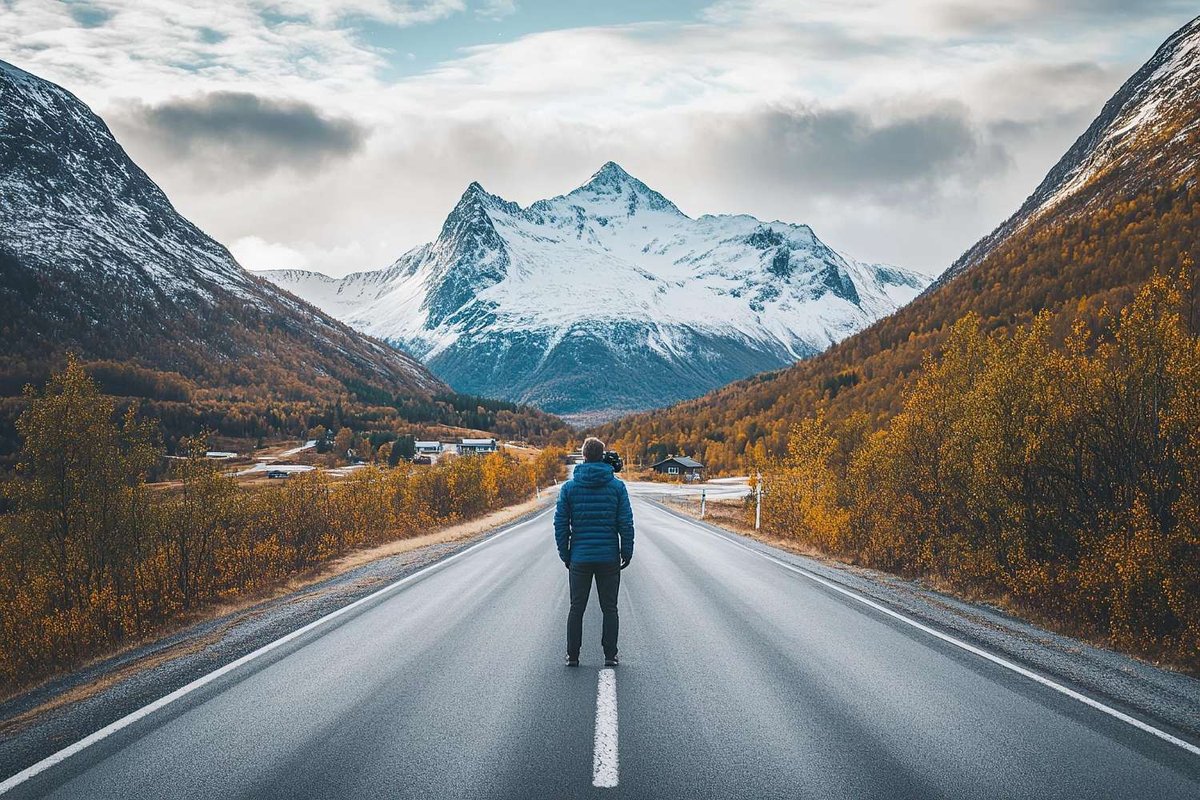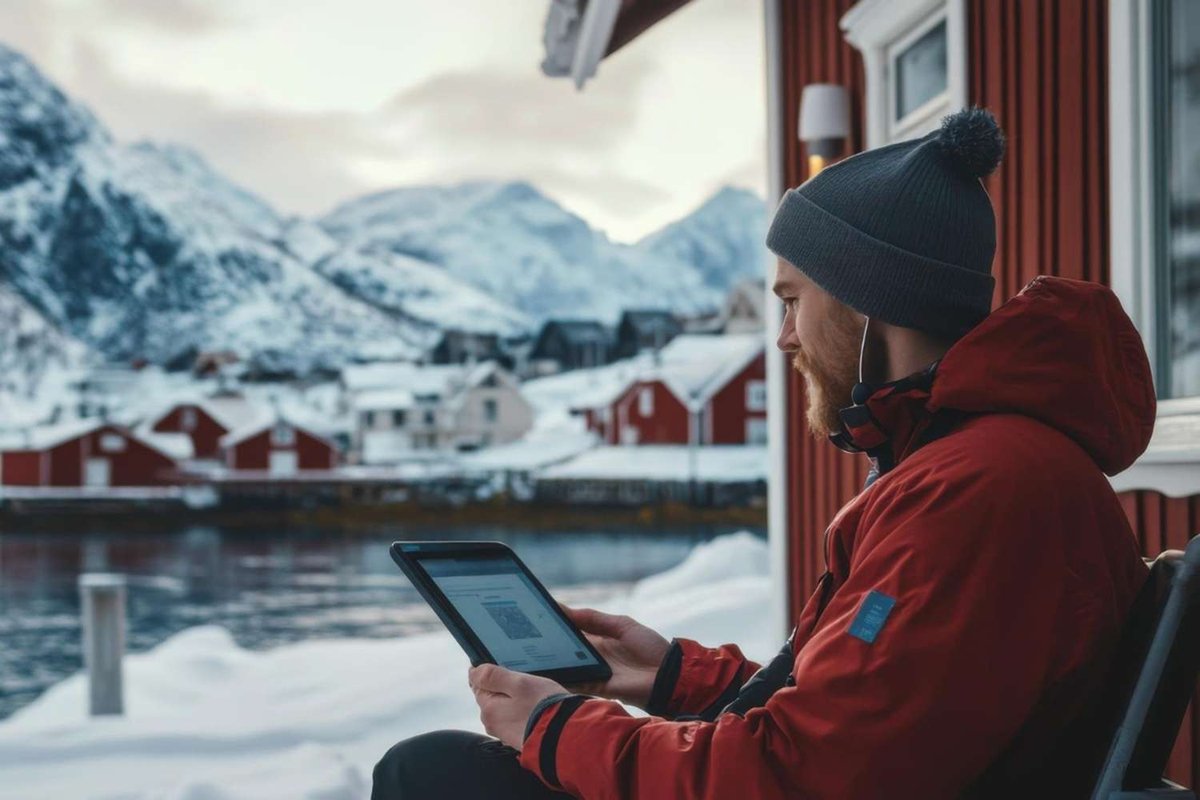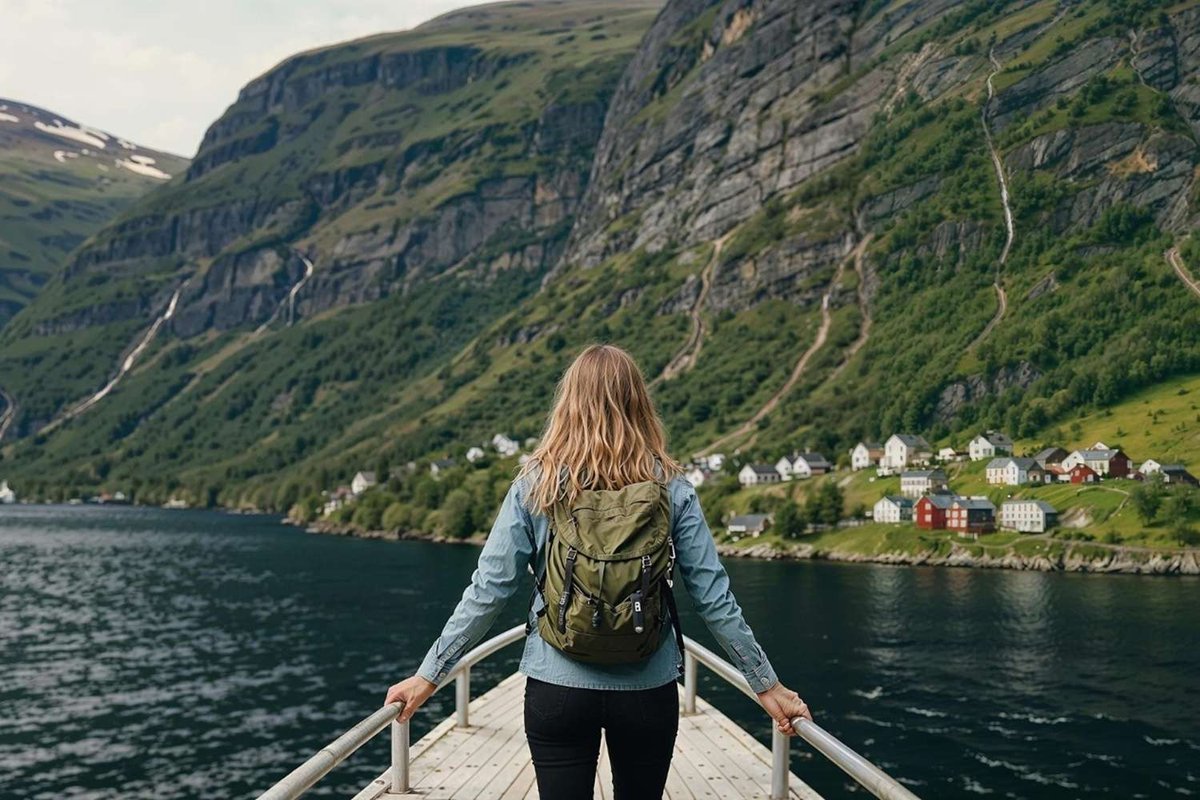🧳Norway in 3, 7 and 14 days: fjords, Lofoten, northern lights — create the perfect itinerary for any holiday
Norway stretches for almost two thousand kilometres from the cosy beaches of Kristiansand to the harsh tundra of Finnmark: the climate, cultural traditions and landscapes change in just an hour or two of driving. Therefore, your itinerary is the main tool that will turn this expensive northern country into an affordable and eventful adventure. Below are ten detailed FAQ answers (110-130 words each) where we discuss the choice of trip duration, transport, budget and seasonality. In the text, you will find cross-references to thematic categories of the blog so that you can delve deeper into the details if necessary.

❓10 frequently asked questions and detailed answers
1. How do you know how many days — 3, 7 or 14 — you need?
If you're new to long flights, a three-day express tour lets you 'get a feel' for the country: the Oslo-Flåm railway, a mini-cruise on the Nærøyfjord and the viewpoints of Bergen. If you want to see both nature and cities, seven days is a good option. If you want to see more, add the Trollstigen road and the Preikestolen trail. You will need a combination of a train, bus and ferry for this. Two weeks is a long time, but it gives you the chance to reach the Arctic Circle: the Lofoten Islands, whale watching, and the Northern Lights near Tromsø. You can compare flight costs and prices for seasonal accommodation in the 'Planning & Budget → Expense Calculators' section. You can also find train and ferry schedules in the 'Transport, Roads, Car Rental' section.
2. How many places can you really see in three days without rushing?
Day 1: Oslo — Akershus Fortress, Viking Ship Museum, lunch at Aker Brygge. In the evening, take the Bergen Railway to see the sunrise in Flåm.
Day 2: Take the Flåm Railway and then go on a two-hour cruise on the narrowest fjord in the world. After that, catch a bus to Bergen, where you can visit the old Bryggen and the market square. On the third day, you can climb Fløyen or Ulriken for a great view of the archipelago, and then fly back to Oslo or Europe. You will be spending all three days in the relatively mild climate of the southwest, but you will always need a raincoat (see the 'Weather and seasons' section for more details). For ticket and admission prices, see 'Prices and costs'.
3. What is the best way to get around on a 7-day trip without spending too much money?
The secret is to buy train and bus tickets 60–90 days in advance: the Vy 'Low Price' fare saves you up to 50%. Bus companies Nor-Way and Lavprisekspressen cover the gaps between the fjords, and the local airline Widerøe quickly connects Bergen with Trondheim. In cities, get a daily CityPass. This includes transport and museums. Ferries travel along the fjords as part of the motorway, and you can pay for your ticket on board with a bank card. You only need to buy your ticket in advance for Geiranger. You can find more money-saving tips in the 'Budget tips' section. For more information on parking and AutoPASS, look in the 'Transport, roads and car hire' section.
4. What activities will make a week-long trip unforgettable?
Combine two contrasting tracks: Preikestolen (4–5 hours on foot above the Lysefjord) and Besseggen in Jotunheimen (7–8 hours along the ridge of a turquoise lake). Spend a night in a mountain hut run by the Norwegian Trekking Association, where you can also use the sauna. Then, go kayaking in Geiranger at sunrise. If you like extreme sports, you can cycle down Trollstigen and go cod fishing in the Atlantic (for more information, see 'Nature, national parks and outdoor activities → Hiking, kayaking, cycling'). To choose the right season for each sport, go to the 'Winter sports' section. There, you will find a calendar of trail openings and ski pass prices.
5. How can you spend 14 days exploring the south, the fjords and the Arctic?
A 'ladder' route up the map: Oslo (2) — Bergen (2) — Trollstigen + Geiranger (2) — Trondheim (1) — Arctic Circle Express night train to Bodø (1) — ferry to Lofoten (3) — bus/ferry to Tromsø (2) — bus to Alta or Honningsvåg (1). Make sure you have a spare day in case there are storms in the fjords or roads are closed. For each region, we have put together a list of the best locations and the most common problems with the weather in the 'Regional guides → City guides' section. We also have tips for Hurtigruten cruises in the 'Fjords and cruises' section.

6. How much money should you budget and where can you save, depending on how long your trip is?
The minimum amount you would spend each day if you were to travel on a budget would be €150 (Express-3), €170 (Week-7) or €165 (Long-14). The amount spent on supermarkets would increase on the first option, and the amount spent on transport would decrease thanks to travel cards. You can save money on where you stay. A rorbu cabin is cheaper than a hotel, and if you join the DNT, you can get a hut for NOK 350. Cook for yourself: Supermarkets like Kiwi and Rema 1000 are offering evening discounts of 50% on fresh fish. And remember to apply for Tax Free when you buy equipment that costs more than 315 NOK. You can find detailed calculators in the 'Expense Calculators' section, and a guide to food prices in 'Cuisine and Gastronomy'.
7. How do things like the time of year affect logistics and impressions?
The summer peak (June-August) is when the days are longest, but prices and crowds are at their highest. Book accommodation six months in advance. May and September are cheaper, and the fruit orchards of Hardanger are in bloom. The polar day in Lofoten lasts from the end of May to 17 July; the polar night lasts from the end of November. The Northern Lights are more likely to be seen from September to March, with February and March being the clearest months (see Northern Lights and Astronomy). It is normal for the weather to change suddenly, so check Yr.no every six hours. You can find more information in the Weather and Seasons section.
8. How can you make sure you don't pay too much for a place to stay, or end up homeless?
Booking.com offers good non-refundable rates for 6–8 months in Bergen and Oslo. In the fjords, look for campsites and family rorbu cabins: these can accommodate four people for €100.
In Lofoten, you need to book a rorbu six months in advance or look for private accommodation on Finn.no. DNT membership (890 NOK/year) gives you access to a network of cabins where you can cook for yourself. You will be given one key that will work in all of these cabins. You can find a list of options, prices and reviews in the Accommodation category, and tips on camping etiquette in the Safety, sustainable tourism and accessibility section.
9. Which apps and services make travelling easier?
Entur puts together timetables for all types of transport, including ferries. Maps.me has offline maps that work without an internet connection in the mountains. Yr.no gives local weather forecasts, even down to wind gusts.
Vipps is useful if you get a Norwegian SIM card with BankID-Light, and Travel Planner Hurtigruten will show you available cabins on the desired stretch of coast. Photographers can use Aurora Forecast and PhotoPills to calculate how strong the aurora is and how they can compose their shots. Find more digital life hacks in the 'Communication and Internet' section, and instructions on how to rent eSIM routers in 'Useful tips for travellers'.
10. What do you need to do to get ready, both physically and with documents, for a long trip?
Increase your daily steps to 12,000–15,000 over a period of 4–6 weeks. You can also add climbing stairs with a 7 kg backpack. Take out insurance that covers hiking above 1,500 m and sea kayaking. If you're going on a trip above the Arctic Circle, make sure you have all your vaccinations up to date. Make copies of your passports and print out your route and keep them in the cloud and in your backpack. You will need a spare battery, a layered clothing system (base layer, fleece, membrane) and trekking poles. You can find emergency contact numbers and a list of hospitals on duty in the 'Medicine & Insurance' section. The rules for staying safe and protecting the environment are in the 'Safety, Sustainable Tourism and Accessibility' section.

Whatever format you choose — the express trio of Oslo + fjords + Bergen, the classic 'fjord week' or the epic 14-day northern safari — Norway rewards you generously: the mirror-like waters of Geiranger, the roar of the Atlantic in Lofoten and the silky shimmer of the Aurora Borealis. If you have a clear plan, understand the seasons and use a couple of reliable apps, you can make this expensive northern country a predictable and accessible destination. Use the blog sections to compare prices, choose a campsite or calculate fuel costs, and set off to enjoy the cleanest air in Europe, the taste of brown cheese and the feeling of freedom at the edge of the continent.





0 comments
Log in to leave a comment